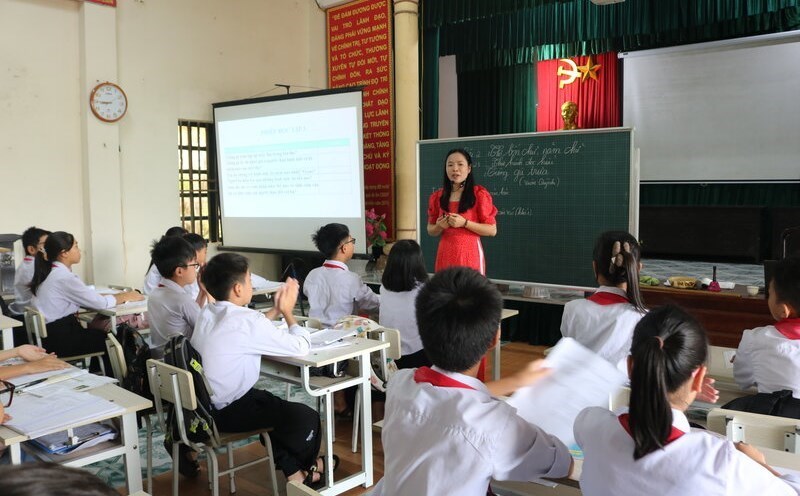The above content is included in the draft revised Law on Education, submitted by the Ministry of Education and Training to the National Assembly at the May session.
At the draft, one of the changes is the form of secondary school graduation confirmation. Accordingly, students studying at the elementary program, junior high school program, which are eligible as prescribed by the Minister of Education and Training, is confirmed by the school principal through academic records instead of the Head of Education and Training Department of the district and district level as the current diploma.
The Ministry of Education and Training explained that this adjustment is in line with the policy of organizing local governments at two levels, while also in line with the goal of popularizing education and international trends. Many developed countries (US, Canada, UK, Australia, Finland) do not issue high school graduation certificates but use the principal's confirmation of learning outcomes in lower school to consider studying at higher levels or district schools.
Confirming the completion of the junior high school program does not affect the rights and obligations of learners. Currently, junior high school graduation is a mandatory criterion for students to take the 10th grade entrance exam. Last year, the Ministry removed the excellent, good, and average classification above this high school graduation certificate.
The draft also changes the high school diploma from the Director of the Department of Education and Training to the school principal. This contributes to increasing the autonomy and initiative of the school in the organization and management of educational activities; Reduce administrative procedures and costs.
In addition, the draft removes the concept of intermediate schools, converts them to vocational secondary schools and adds vocational secondary schools as education levels in the national education system. Vocational secondary schools will integrate vocational knowledge and knowledge from the high school program.
In the vocational secondary school program, students have 2 options: being granted a primary vocational certificate or intermediate vocational certificate. After finishing grade 9, students have 3 options: entering high school, studying at vocational secondary school with an elementary certificate or studying at vocational secondary school with a vocational intermediate certificate.
According to the Ministry of Education and Training, the above amendments and supplements create opportunities for learners to have many options after high school, create opportunities for inter-connected learning, and at the same time, comply with UNESCO's system approach.
In addition, the Ministry proposes to popularize preschool education from the age of 3, eliminating the School Council at preschool and general level ( submitted to primary school, junior high school, high school). The Ministry of Education and Training's time to collect opinions on the draft law is from now until July 9.











